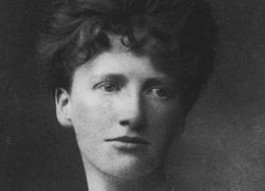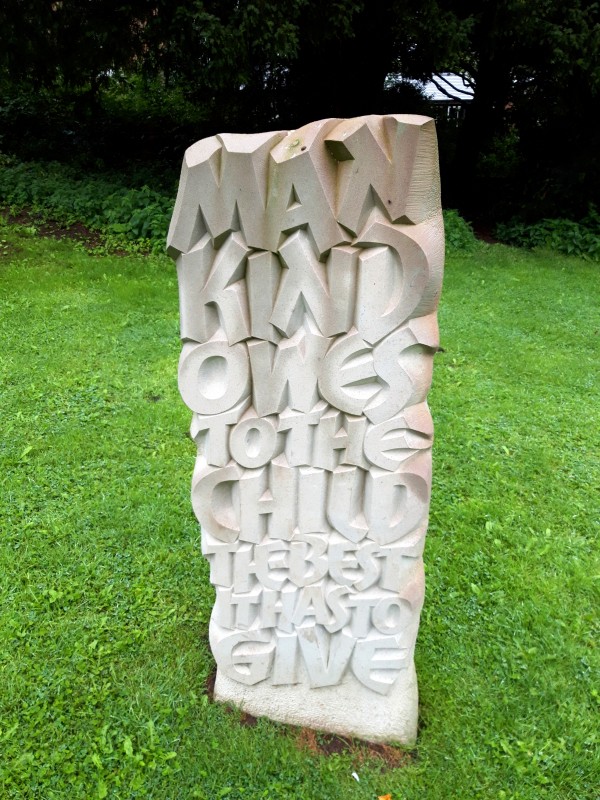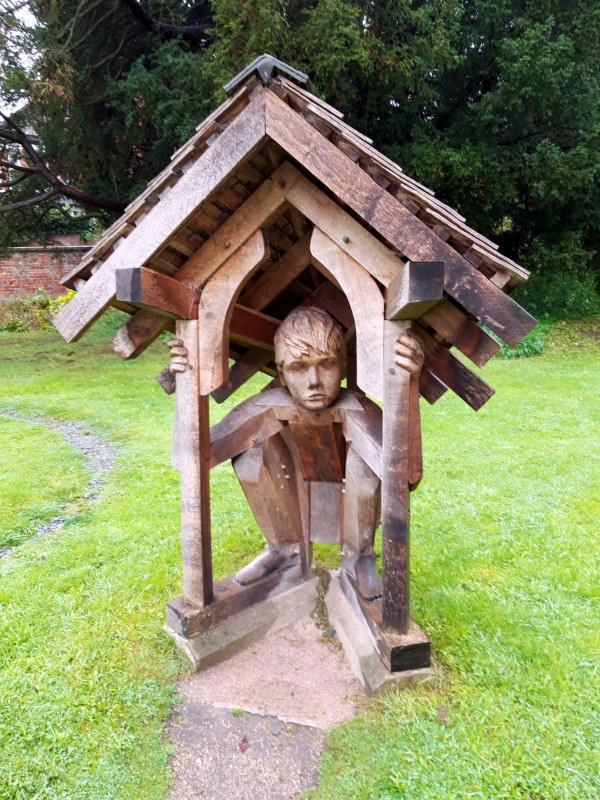Ellesmere’s finest
Whether it’s a large or small one, Wikipedia pages on human settlements contain a list of local notable – past and present.
Ellesmere in Shropshire – (where your ‘umble scribe recently spent a most enjoyable week) is no exception to this general tenet. Indeed its list of notable people is large enough to be divided into ordinary mortals and sportspeople. However, amongst the members of the aristocracy and one disgraced former MP, there’s one name that shines out, that of Englantyne Jebb (25 August 1876 – 17 December 1928) – one of only two women in the list of the town’s great and good.
 As a family, the Jebbs were comfortably off with a strong social conscience plus a commitment to public service. According to Wikipedia, “Her mother had founded the Home Arts and Industries Association, to promote Arts and Crafts among young people in rural areas; her sister Louisa would help found the Women’s Land Army in World War I. Another sister, Dorothy, who married the Labour MP Charles Roden Buxton, campaigned against the demonisation of the German people after the war.”
As a family, the Jebbs were comfortably off with a strong social conscience plus a commitment to public service. According to Wikipedia, “Her mother had founded the Home Arts and Industries Association, to promote Arts and Crafts among young people in rural areas; her sister Louisa would help found the Women’s Land Army in World War I. Another sister, Dorothy, who married the Labour MP Charles Roden Buxton, campaigned against the demonisation of the German people after the war.”
As part of that campaign against the demonisation of Germans after the First World War (when Britain maintained its wartime blockade that left children in cities like Berlin and Vienna starving. Ed.), Eglantyne and her sister Dorothy were arrested in 1919 in London’s Trafalgar Square for distributing leaflets which bore shocking images of children affected by famine in Europe and the headline: ‘Our Blockade has caused this – millions of children are starving to death‘.
Jebb was tried for her protest, found guilty and fined. However, prosecuting counsel was so impressed with her that he offered to pay the £5 fine himself.
Shortly afterwards, the sisters decided that campaigning was not sufficient and direct action was required. In May 1919, the Save the Children Fund was set up at a packed public meeting in London’s Royal Albert Hall. The organisation quickly raised a large sum of money from the British public and officials were dispatched to organise relief work. The Save The Children website has an excellent summary of its history, including those early post-WW1 days.
The success of Save the Children led Eglantyne and Dorothy to attempt to set up an international movement for children. In 1920, the International Save the Children Union (Union International de Secours à l’Enfant) was founded in Geneva, with the British Save the Children Fund and the Swedish Rädda Barnen as leading members.
In 1923 Eglantyne went to Geneva to attend a meeting of the International Save the Children Union with a plan for a children’s charter. She drafted a short and clear document which asserted the rights of children and the duty of the international community to put children’s rights at the forefront of planning. The Declaration of the Rights of the Child, or the Declaration of Geneva as it came to be known, was adopted in 1924 by the League of Nations, the precursor to the current United Nations, which has its own Convention on the Rights of the Child.
Eglantyne died in Geneva in 1928 after many years of ill health due to thyroid problems. She is buried there Saint George’s cemetery. Her epitaph features a quote from Matthew 25:40: “Verily I say unto you, Inasmuch as ye have done it unto one of the least of these my brethren, ye have done it unto me.“
Eglangtyne has not been forgotten by Ellesmere. The town’s Cremonrne Gardens bordering the Mere feature the Jebb Garden, which itself contains a large sculpted stone bearing some words of Eglantyne’s from that initial Declaration of Geneva as part of the local sculpture trail. It was carved from Howley Park York sandstone by Llansilin artist John Neilson.

Next to it is another sculpture entitled “Refuge” by John Merrill. It is is set in a grass and stone labyrinth to symbolise the perilous journeys taken by child refugees.

Well done to Ellesmere for remembering a remarkable townswoman!